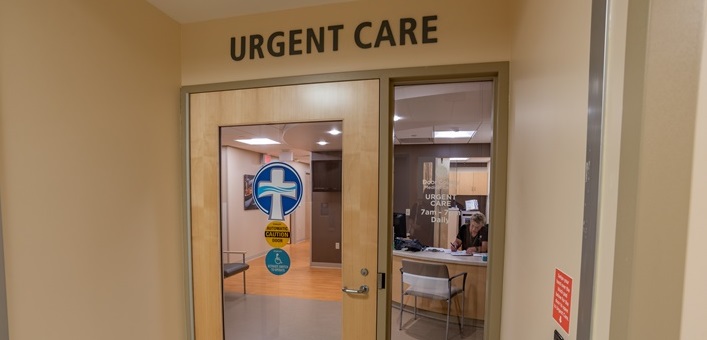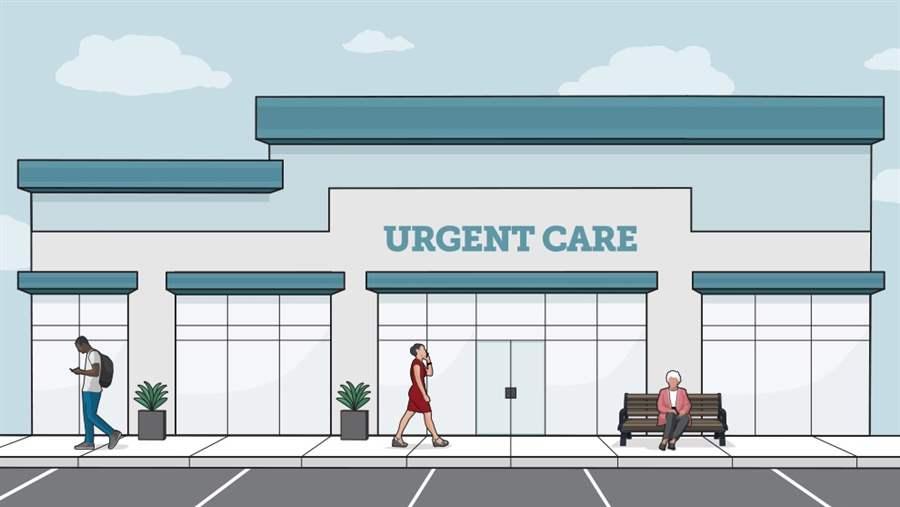Leading Factors to Choose Urgent Care Over the Emergency Room
Leading Factors to Choose Urgent Care Over the Emergency Room
Blog Article
Understanding the Relevance of Urgent Treatment Solutions for Non-Life-Threatening Medical Issues
The significance of urgent care solutions for non-life-threatening medical issues can not be overemphasized, particularly in today's healthcare landscape. These centers offer a vital option for clients seeking prompt interest for conditions that call for instant care however do not warrant a visit to the emergency situation space. By understanding the advantages of urgent care, such as decreased wait times and expense performance, one can much better value their function in client health and wellness management. The subtleties of exactly how to browse these services successfully stay to be explored, elevating inquiries concerning their optimum usage.
What Is Urgent Treatment?
Urgent care refers to a group of clinical solutions created to deal with non-life-threatening problems that require prompt attention yet do not require a see to the emergency clinic. These facilities give a bridge between health care and emergency situation services, using easily accessible healthcare alternatives for individuals experiencing severe clinical issues, such as small cracks, sprains, infections, or severe ailments that occur all of a sudden.

The extent of solutions supplied by urgent treatment centers can differ however normally includes treatment for usual ailments like colds, influenza, and allergic reactions, in addition to minor injuries (urgent care). Furthermore, several urgent care facilities use preventative services, such as vaccinations and physical examinations, to attend to wider health needs. By offering a hassle-free choice for urgent medical issues, these centers play an important function in the healthcare continuum, guaranteeing that individuals obtain appropriate treatment when they require it most
Benefits of Urgent Treatment Services
Many people discover that utilizing urgent care solutions supplies significant benefits over typical emergency clinic brows through or awaiting a health care appointment. One primary benefit is the decreased delay times. Immediate care facilities usually have much shorter wait durations, permitting patients to obtain timely medical attention when they need it most. This expedited treatment is especially valuable for non-life-threatening problems that call for prompt intervention.
Another advantage is the prolonged hours of operation. Lots of immediate treatment facilities are open nights and weekends, fitting people who may not have the ability to see their health care physician throughout routine workplace hours. This flexibility makes it simpler for patients to accessibility care at their convenience.
In addition, immediate care services commonly use a cost-effective alternative to emergency rooms. Patients frequently encounter reduced co-pays and total costs when seeking treatment for minor disorders at immediate treatment facilities rather than healthcare facility emergency situation departments.
Lastly, immediate treatment centers are outfitted to deal with a variety of non-life-threatening concerns, giving a wide series of solutions under one roof covering. This comprehensive method not just simplifies the therapy procedure but also boosts client fulfillment by providing prompt and effective care.
Usual Problems Treated
What sorts of non-life-threatening problems can patients expect to receive treatment for at urgent treatment facilities? Immediate care facilities are equipped to manage a wide variety of common medical concerns that require timely focus but do not present an instant hazard to life. These centers frequently treat conditions such as small fractures, strains, and strains, giving crucial take care of injuries that occur throughout day-to-day activities or sports.
Furthermore, people regularly seek treatment for respiratory infections, including colds, influenza, and bronchitis, where prompt treatment can minimize signs and symptoms and prevent problems. Skin problem such as breakouts, insect attacks, and small burns are also frequently resolved, as prompt care can reduce discomfort and minimize the threat of infection.

Comparing Urgent Care and Emergency Situation Rooms

One significant distinction exists in delay times; urgent treatment centers generally have shorter wait times compared to emergency rooms, which can be crowded with even more critical cases. This efficiency allows people to obtain prompt treatment for their conditions.
From an economic viewpoint, urgent care visits often tend to be much less costly than emergency clinic sees. Insurance policy copays and out-of-pocket costs are frequently lower at immediate care centers, making them an extra cost-effective option for non-emergency circumstances.
How to Choose an Urgent Treatment Center
Selecting the visit appropriate urgent treatment facility can dramatically improve the high quality of care obtained during a non-life-threatening clinical issue. When selecting an immediate care facility, several crucial factors must be considered.
First, analyze the facility's certification and licensing. Look for facilities that are certified by identified organizations, as this suggests adherence to quality requirements. Next off, evaluate the variety of solutions provided. Some immediate care centers focus on specific areas, while others give extensive treatment for different clinical issues.
Additionally, consider the place and hours of procedure. A comfortably located facility with prolonged hours can be crucial for timely treatment. It's likewise advisable to examine the facility's delay times and client testimonials, which can offer understandings right into the overall client experience.
Final Thought
In conclusion, immediate treatment services play an essential function in addressing non-life-threatening medical concerns efficiently. By using immediate interest for numerous conditions, these facilities improve individual accessibility to prompt treatment while lowering the pressure on emergency clinic. The advantages of immediate treatment, consisting of prolonged hours and lower expenses, make them a favorable choice for people seeking timely treatment. Inevitably, recognizing the relevance of urgent care facilities adds to enhanced health care management and person satisfaction.
Many individuals discover that making use of immediate care solutions offers substantial have a peek here advantages over standard emergency space sees or waiting for a primary treatment consultation. Lots of immediate treatment facilities are open evenings and weekend breaks, accommodating individuals that may not be able to see their main treatment doctor during routine office hours. Urgent care facilities are developed to attend to non-life-threatening conditions, such as small cracks, infections, and ailments, offering a practical alternative to emergency rooms for those in requirement of prompt treatment. Some urgent care facilities specialize in specific areas, while others provide comprehensive treatment for various clinical problems.
Report this page